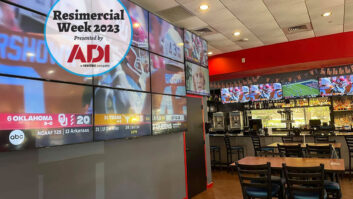Have you ever wondered what engineering means to automakers? Companies like Mercedes-Benz, Audi, and BMW spend countless man-hours perfecting each design and engineering every aspect of a high-end, high-performance car. That’s how they build their name. That’s why people pay them the big bucks. In many cases, people pay even more for their high-end, high-performance home theaters than for their cars. Yet we seem to assume that people have lower expectations for the engineering of their home theaters. Perhaps people do expect the same level of engineering, and the reason they balk at paying us the big bucks is that they’re suspicious we’re not really doing proper engineering. Or doing it well. What if they’re right?
Airbus Industries never built test models of the A380. They engineered the entire plane virtually, then built one and flew it. We could do the same thing with a home theater if complete product specifications were available. Unfortunately, they aren’t published for consumer products. They are for professional and commercial ones: I’m sure you’ve looked at the specifications for professional speakers or amplifiers and wondered what all those weird little graphs and numbers mean. Properly trained engineers use them to design professional sound systems that work well from the start. Those specifications aren’t published for consumers, because no one asks for them; no one asks for them, because no one knows how to use them.
OK, OK, OK. I realize that I’m ragging on you guys a little bit, here. So let’s address the elephant in the room. Your business is good. You’re selling products, putting together decent rooms, making some profit, and satisfying most of your clients. Why bother to learn a bunch of new stuff (maybe even get an engineering degree) and bug manufacturers to release better specifications? All that could get expensive, time-consuming, and, well, a little boring. Will proper engineering really benefit you?
Here’s the truth. You know all those nagging little oddities in your systems? Those things that don’t make sense? Like an amp channel that keeps dying for no reason. Or a power conditioner that trips too often. Or a client who inexplicably pops tweeters like bubble wrap. You just assume it’s a bad product or that the client is abusive, and you resent the fact that you have to keep on going back to the site for support calls. Every call eats away at your profit and dings your reputation with the client. Guess what? When I’m called in to evaluate problem-child systems, I frequently discover that the cause of those nagging little oddities is bad engineering by the integrators. They didn’t realize that what they didn’t know was hurting them.
Case in point: A couple of years ago, there was a very popular seven-channel power amp. It was frequently paired with an equally popular speaker from a company that caters to the custom market. You’d know both of them. It just so happened that this speaker’s impedance dropped very low over a fairly wide frequency range. (If you’re not familiar with speaker impedance, it’s basically a measurement of how hard a speaker pushes against the amplifier. It varies with frequency; the ohm number in consumer specifications is an average. A low impedance basically makes the amplifier gush out current–possibly more current than the amplifier can safely produce.) The seven-channel amp was based on a design from the professional world where there are no low-impedance speakers, so the amplifier had current overload protection with a rather high threshold. Can you guess what happened? Folks got their systems rocking a little bit and hit that current threshold. Click; amplifier went into protect mode. Silence. This problem repeated itself countless times across our industry. One integrator I know made 10 service calls to a client’s house before the client finally threatened to sue. This was not a bad amplifier. It was not a bad speaker. They were just really bad together. This kind of incompatibility would be uncovered at the outset of a project with proper engineering practices in place.
To get the ball rolling, everyone needs to be up to speed with the type of specification data that is published for professional gear. Once folks know what to look for and what it means, we can all start requesting it. I’m going to be working on that, but I need some help from you guys. Open a dialog with your rep friends and favorite manufacturers. Let’s organize some classes at CEDIA or perhaps a series of podcasts explaining common specifications and how to use them. I’ll try to spread the word as things develop. Look for new data to appear, possibly announcements from CEDIA or other organizations. There’s a ton to know and learn. Let’s get to it…
Chase Walton contributed to this column.







